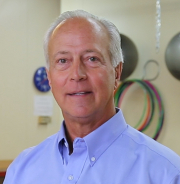Injury patterns on PGA Tour golfers change throughout the season for a variety of reasons. Course terrain, technique changes, swing modifications, and physical training all challenge the PGA golfer in different ways. The cause of injury demands unique attention from the golfer and sports medicine specialist. To the chiropractor or physical therapist on tour a strain isn’t always a strain. Treatment protocol will be modified according to what caused the injury as well as the rehab exercises necessary to restore body function.
Data has always shown that the lead shoulder is much more susceptible to injury than the trail shoulder in golfers. Recently it has been noticed that trail shoulder symptoms are increasing in frequency when PGA golfers come into the PGA Performance Centers.
A couple of explanations may be due to how hard PGA golfers are now swinging to increase distance both in practice and during competition. The demand for the shoulder musculature to decelerate forces that larger muscles create continues to increase. The other involves changes in the golf swing being presented by instructors. Recently some golfers have been keeping the trail elbow in and tighter to the body during the downswing and acceleration phase of the swing which puts a different angle of stress on the trail shoulder. This change will add power and distance to your shots and provide a consistent plane of your golf swing. Results all PGA golfers look for.
Clinically the challenge is in determining if these changes truly improve the golfers swing or are not in the capability realm of the golfer. If the swing change is improving the golfers game you may have to provide treatment and exercises necessary to help the golfer’s shoulder adapt and implement the change. The result being a swing change that the golfer can rely on to increase their performance. If the shoulder is not capable of adapting to the swing change and further shoulder damage is probable maybe the swing change is not in the best interests of the golfer. Maybe another swing change should be considered.
All competitive golfers strive to be their best. Demands on professional golfers continue to evolve. The sports medicine specialist must also adapt and innovate their approach to diagnosis and treatment to be relevant. Injury patterns change and so must our treatment and exercise procedures. It is what makes our responsibility to the golfer-athlete so exciting and gratifying!

